 |
||
|
||
| ||
This article seems to be closer to the motherboard section. But, as I once mentioned, tests of just a professional accelerator do not give a complete idea on performance. The overall system performance is very important. Besides, in many CAD/DCC programs the final scores greatly depend on amount of memory installed, processor's speed and the number of processors. That is why the today's tests will involve all our professional accelerators and one more thing ;-). The objective of the today's test is to study scalability of the professional accelerators. Secondly, we will find out what platform suits better for professional use. Finally, we will show how important an appropriate approach is when assembling a computer meant for CAD/DCC applications. Without further ado let's have a look at the tools and test system configurations. Tested cards and driversThe following cards were tested:
Driver versions used:
Test system configurationThe testbeds are based on the following Intel Pentium 4 platforms:
In the first part we will take a look at the results and compare the cards that we know quite well with the new-comers. The Matrox Parhelia and ATI's Radeon 9700 and Radeon 8500 are new in this test. One more interesting participant is a card working with the altered driver for professional accelerators from ATI - so called SoftFireGL 8800. I didn't use in the test junior models of professional cards from NVIDIA, as their capabilities were revealed last time when we tested them on the 2.2GHz CPU based platform, but I left here the junior ATI FireGL 2 as its potential is not uncovered entirely. This test will show whether it makes sense to use this card in future. We used the Matrox's card as it has a proper price and the company released professional-oriented drivers. The gaming card Radeon 9700 is used as it's the fasted solution on the gaming market, that is why it's interesting to examine it from a professional standpoint. Besides, ATI has already announced a professional card based on its new chip, that is why we can use the scores of the Radeon 9700 to get an idea on a performance level of the professional model. The hacked version of the FireGL 8800 card is used as it's based on the RADEON 8500; hence the question what differs the professional solution from the gaming one apart from the special drivers price. As you know, the difference between the NVIDIA's models doesn't justify the price gap. And later we will see whether ATI has it the same. The other cards need no comments, so, let's dive into the tests. First of all, let's test the cards based on the Intel's platform. 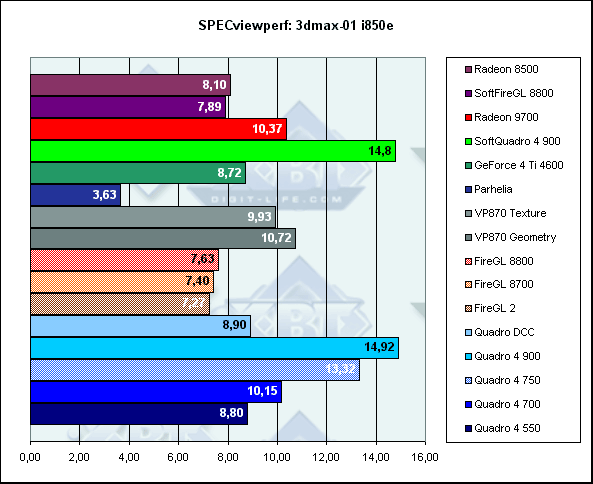 1) The fastest card is NVIDIA Quadro 4900 XGL. The only solution that is able to compete against it is its brother - SoftQuadro. 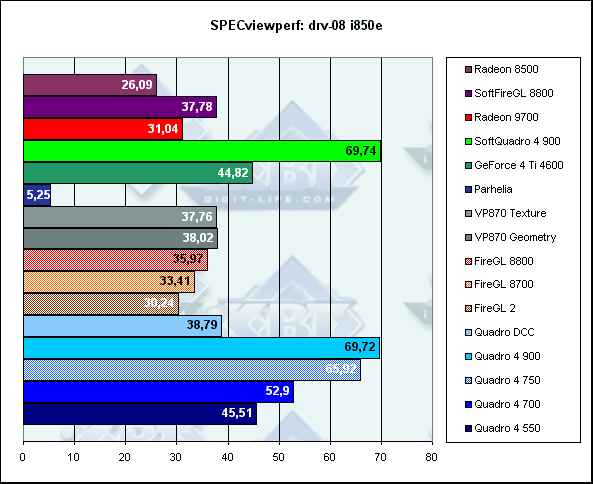 The new test doesn't change much, but the altered FireGL 8800 outscored both the original FireGL 8800 and the RADEON 9700. I'm arrived at the conclusion that companies should launch a single GPU version and position cards for different market segments by means of different drivers. And the cards should sell at equal prices. It will be cool for users but awful for manufacturers as they are going to lose much on selling professional solutions. Moreover, I'm inclined to think that the companies are now receiving super-profits in this sector. 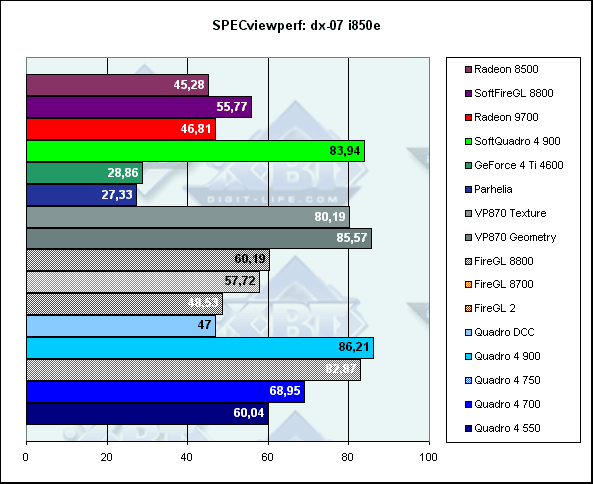 The most expensive NVIDIA's card keeps on reigning on the top of the Olympus. When the NV30 based professional model comes onto the scene the situation might change. 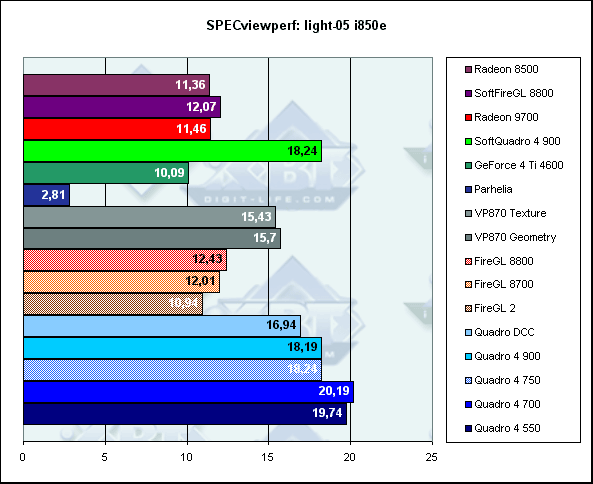 The results of this test do not coincide with the real situation. When I just started testing with the seventh version of the SPECviewperf I said the test was very processor-dependent where an accelerator "doesn't have many shares". 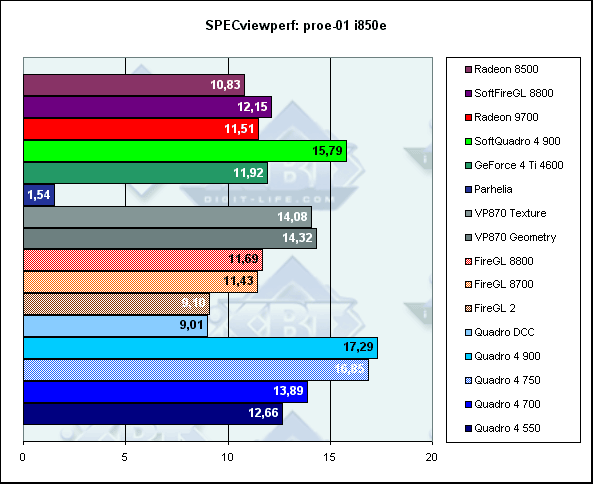 Well, the Matrox's card deserves just a requiem... As for the rest, the outcome is the same. 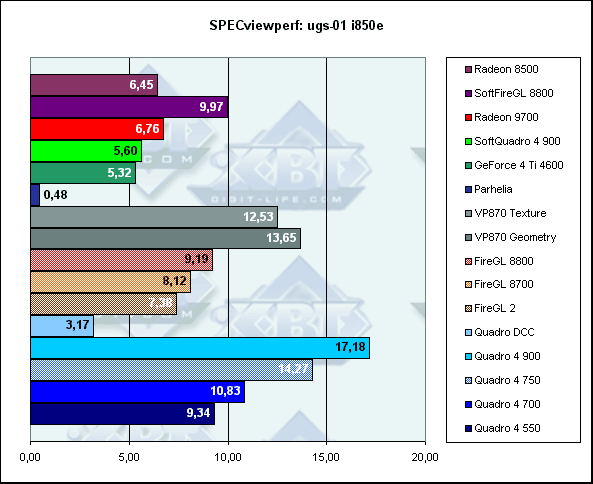 The fact that the SoftQuadro has worse results than the original card means that the gaming card lacks some blocks in the chip, which is fair. And it's different in case of the SoftFireGL - it outdoes even the original FireGL 8800. Card scalabilityTo examine scalability of the cards I used data from the last test in the SPECviewperf on the Intel Pentium 4 2.2GHz based platform. But remember that last time we carried out the tests with another driver version, and the operating system wasn't supplemented with the Service Pack 1. However, it shouldn't affect the outcome much.Here is the test stand:
Scalability was tested on the following cards: ATI FireGL 2 and FireGL 8800, NVIDIA Quadro 4 900 XGL, NVIDIA Quadro DCC, 3Dlabs Wildcat VP870. I think these cards have the best prospects for today, and scalability will unveil the future.  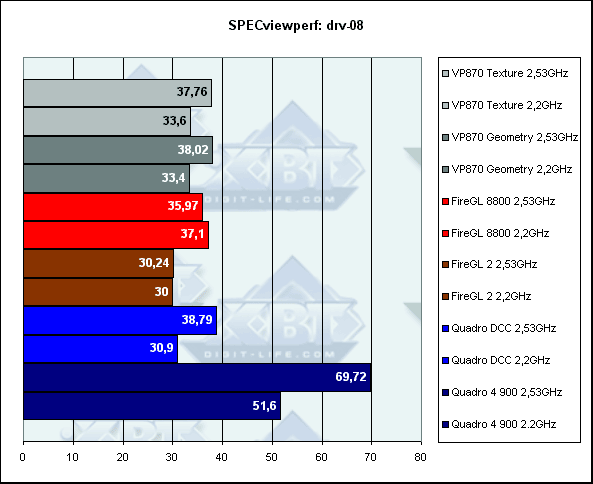 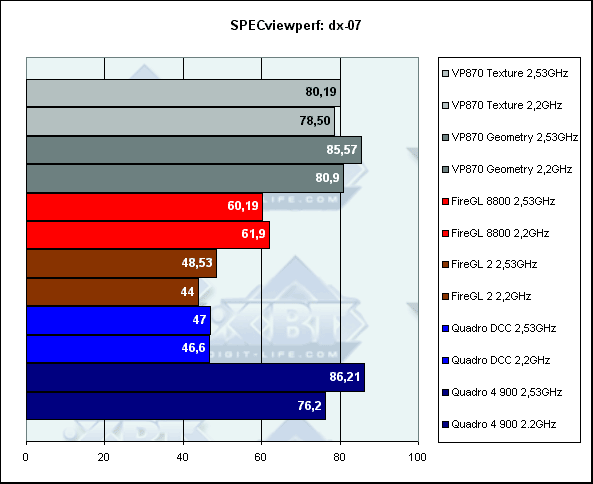 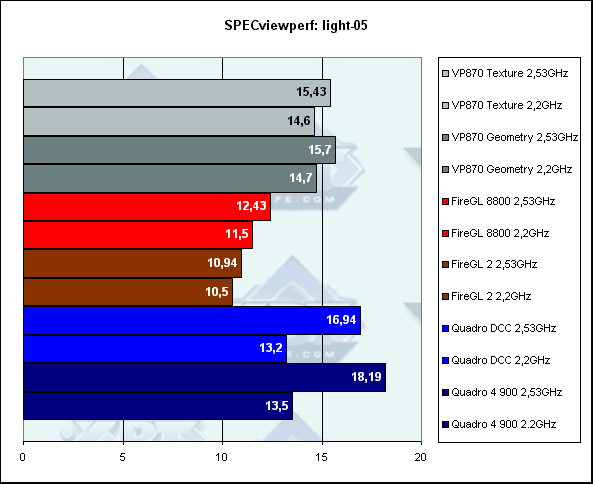 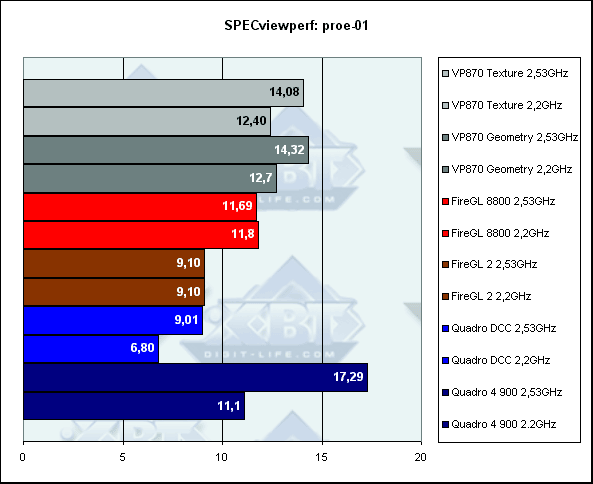 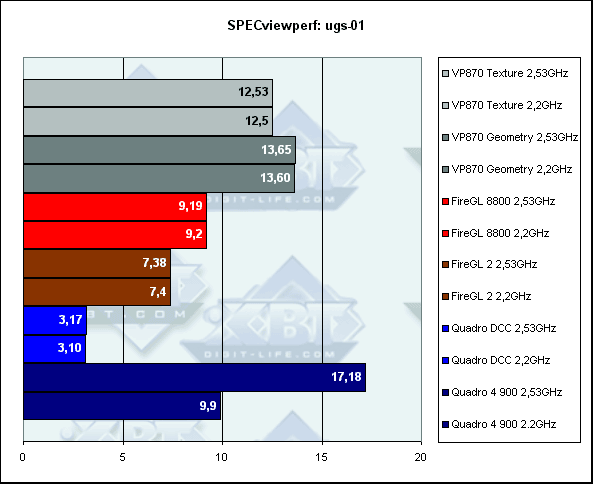 The NVIDIA's models are excellently scalable. The faster the CPU the greater the potential of the cards. The ATI's cards do not look so great. The FireGL 2 works at its breaking point. The FireGL 8800 has some "strength margin". The VP870 is weakly scalable. I suspect that an ideal processor for this card will be the one clocked at around 2.8 GHz; a more efficient one will hardly improve its scores as even on this improved platform the speed gain is not great. However, I may be wrong... Comparison of platforms and dependence of performance on memory speedNow let's see how different cards work on mainboards based on non-Intel chipsets. For comparison I have taken the SIS648 based board for Intel Pentium 4 processors. The chipset allows using memory running at 333MHz and 400MHz. The memory clocked at 400MHz is supported unofficially as it has no recommendations and specifications from JEDEC. 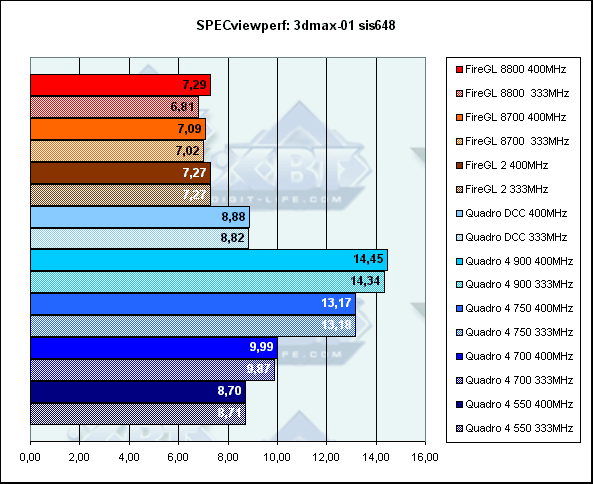 The memory frequency has a weak effect on the results. It turned out that in the 3ds max the memory's speed is not so important as performance of the processor and video card. However, as compared with the Intel's chipset, the SIS648 works a bit slower.  In this test the memory is a weaker link, and 400MHz brings more gain than 333MHz; the RDRAM PC4200 allows for a more performance boost. 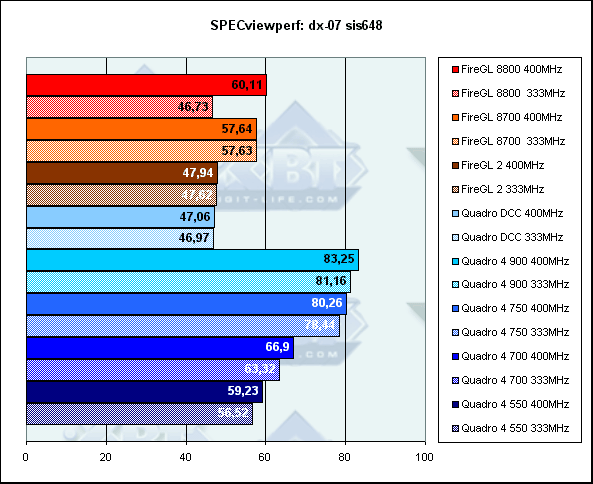 The layout is similar to the previous test. The growth of the memory's frequency allows for a small benefit but even the 400MHz DDR loses to the RDRAM, though the gap is quite narrow. 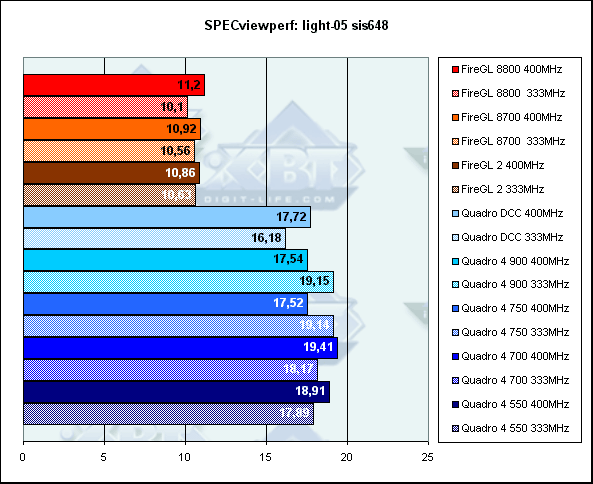 This tests depends both on the processor and the memory. The faster memory brings some benefit.  Here a memory bandwidth is a key factor as the frequency growth results in very good scores (in this application); besides, the RDRAM PC4200 coupled with the i850e chipset turns in excellent scores.  On the i850e the cards have higher scores than on the SIS648 with the 400MHz memory. Nevertheless, the difference is intangible. Growth of the memory frequency doesn't give much benefit, that is why this test is the least memory-intensive. As I found out, the SIS648 has the following flaws:
In closing I must say that:
Alexander Kondakov (kondalex@ixbt.com)
Write a comment below. No registration needed!
|
Platform · Video · Multimedia · Mobile · Other || About us & Privacy policy · Twitter · Facebook Copyright © Byrds Research & Publishing, Ltd., 1997–2011. All rights reserved. |